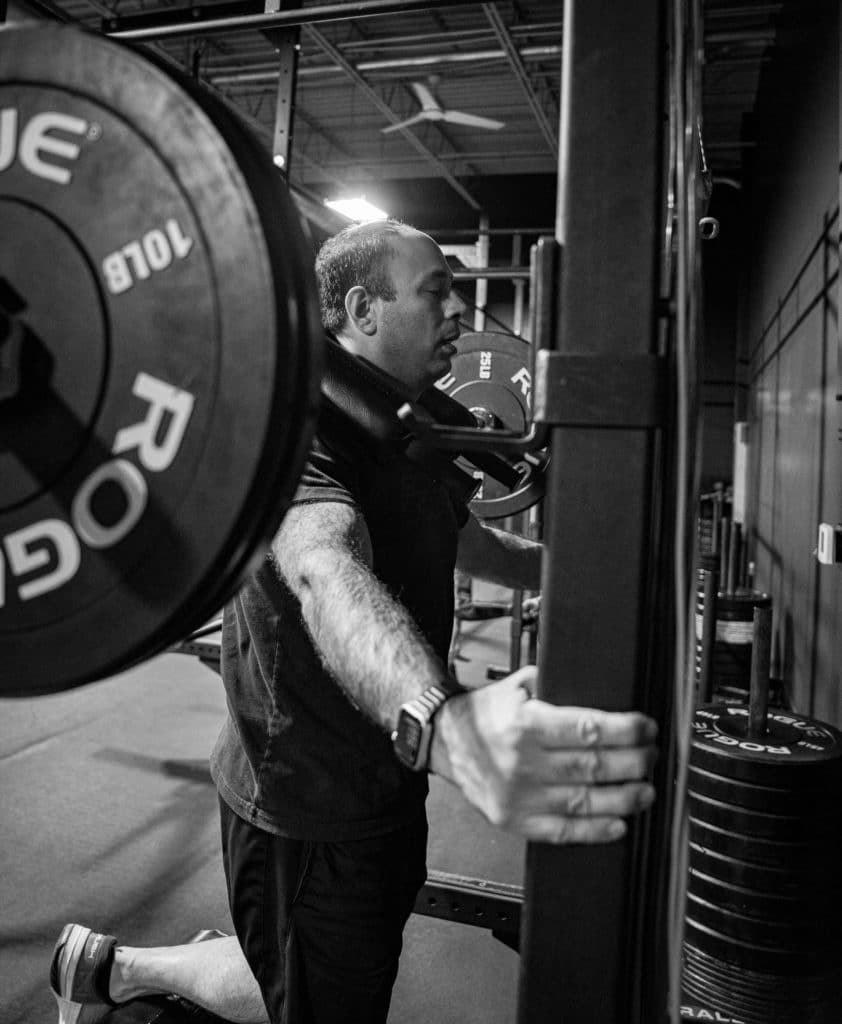We recently received this question via email:
“Do you think it’s ok if I stay in the 6-12 rep range using alternating linear periodization? Below 6 seems too heavy and above 12 is sort of fatiguing for me. Can I keep working out with the same general template and just vary movement order, reps, and exercises and loading type or results will stall and I need to change things up? Any suggestions?”
The simple answer is a combination of yes, no, and it depends.
Let’s dive into the detailed answer. I’ll teach you what to do about the rep ranges and what to do when low reps seem too heavy but high reps are too fatiguing. I’ll also tell you what to do with training templates.
“Is it ok if I stay in the 6-12 rep range?”
Sure, it’s okay. You can do whatever the hell you want. 🙂
The question you have to ask yourself is, what the hell do I want? The answer tells you how you should train.
But, yes, you could conceivably stay in the 6 to 12 rep range for the rest of your training career and remain relatively strong while maintaining appreciable muscle mass. You could also eat plain oatmeal and unseasoned eggs for the rest of your life and not die of malnutrition. But you’d definitely fart a lot. And you’d miss out on a lot of rich experiences.
Changing our training on a monthly or yearly cycle not only helps to fully develop our bodys’ capabilities, it also stimulates us mentally. In not nerd speak–it makes it more fun. It also challenges us. There’s a lot of good science that says challenges make us happier and healthier:
The coach in me has to goad you to lean into the discomfort. Why does doing less than 6 reps feel too heavy? Is there a gap in skill that you need to develop? Do you need to improve your form? Are you just a little afraid? If you answered yes to any or all of these questions, that’s alright. You’re human. But I don’t think it’s okay to just avoid them–at least not if you want to grow as much as possible.
You could also ask yourself, what can I do to make more than 12 reps feel less fatiguing? Do you need to do some muscular endurance work using methods like high-intensity continuous training or tempo strength training?
Again, you can do whatever the hell you want.
But the discomfort you’re feeling could spark some great questions. The answers to those questions could lead you to grow physically and mentally.
Lean in. Get the answers.
Here, I’ll help with some training advice for each issue.
What To Do When Low Rep Ranges Feel Too Heavy
When low rep ranges feel too heavy, two things are typically happening.
There’s a skill gap. This means that lifting form and execution isn’t as good as it needs to be with a given lift. The break in form causes you to lose tension, making the lift much harder than it should be.

Start by wondering if the chosen exercise is right for you. It could be that you’re training movements that don’t work for the proportions of your frame. For example, conventional deadlift from the floor is typically a bad choice for folks with a long torso but short arms and legs. The position puts them at a leverage disadvantage, making the movement feel exceptionally hard. But if these folks elevate the bar in the rack to knee level, or deadlift with a modified sumo stance, the difficulty dissipates because they’re using their leverages to their advantage. So, don’t assume it’s the reps. It might be the exercises you’ve chosen.
If leverages check out, you might need some lift coaching. It could be that you’re not achieving the best starting positions to maintain tension throughout the lift. Hire a reputable coach to have a looksy. Once your position, form, and tension is dialed in, loads feel much lighter.
The second, and much more obvious, option is that you’re working at too high a rating of perceived exertion (RPE). That would literally make the weight too heavy. For example, just because the set calls for three reps doesn’t mean that you should ONLY be able to get three reps with the chosen weight. Always leave at least two to three reps in the tank at the end of a set. If you don’t, you’ll consistently overtax your nervous system, leading you to take a downward turn on the recovery curve. And that, dear friend, will make everything feel heavy.
There’s also a good chance that it’s a combination of each issue that’s making the weight feel heavy. Take the time to explore both options.
Here’s a quick section recap:
- Check in on your exercise selection and performance. If either is off, loads will feel heavier than they should.
- Always leave reps in reserve. This keeps you on the right part of the recovery curve and saves you from overtaxing your nervous system.
What To Do When Higher Rep Ranges Feel Too Fatiguing
The truth is that high reps are supposed to feel at least a little fatiguing. When we do them, we push to at least a little fatigue to help build resistance against higher levels of fatigue. So, it’s totally okay if you finish a set of 15 reps and feel like, man, that was spicy!
But the “too fatiguing” feeling intrigues me. It’s tough to diagnose why it’s happening without testing you and managing your programming. So, I’m going to answer generally. Here goes.
Let’s start with an oldie but goodie from the last section–is the weight too heavy? Higher rep sets are best done by leaving even more reps in reserve. We typically program four to five reps in reserve when doing sets of 12 or more reps. High rep sets tax us more metabolically than neurologically. We need to leave a little more fuel in the tank, and depending on what we’re training for, give ample time to refill the tank. If you use up all of your gas on one set, and then try to go again on short rest, it’ll be hard to offer a repeat performance.

It could be that you need to develop raw materials for muscular endurance. We do that with training methods such as tempo strength training. Tempo training keeps your muscles under tension for 30 seconds to 1 minute during each set, and then has you start again on incomplete rest. This increases the size and capacity of your slow-twitch muscle fibers. High-intensity continuous training (HICT) is another great method for building muscular endurance. You do one to 2 reps every 5 to 10 seconds with relatively heavy weight for sets of five to 20 minutes. HICT improves the aerobic capacity of your fast-twitch muscle fibers, improving their endurance and allowing you to use them for longer periods.
There’s also a chance that you need better aerobic capacity. Generally being in better aerobic condition helps improve your muscular endurance. Hit a few 30-to-90-minute sessions of Zone 2 to Zone 3 cardio per week for 4 to 6 weeks.
Can You Follow the Same General Training Template?
Absolutely. That’s what we do with all of our programming.
We start by considering the main goal of the training block, then we work backwards to write the training phases (one-month training programs) that accumulate to achieve the block goal.
In the process, we fit the training modalities (exercises, methods, sets, reps, etc.) into the same general skeleton that we’ve used for over a decade.
Reps matter. They help to develop our bodies, and our minds, in different ways. You can stay in your comfort zone if you want. But you’ll get a lot more out of your training if you don’t.
You might also like:
- HOW TO SET GOALS FOR 2023
- HOW TO KEEP EXERCISING WHILE TRAVELING
- LET’S SEE HOW GREAT I CAN DO THIS
- HOW TO PROGRESS YOUR WEIGHTS DURING A STRENGTH PROGRAM
- HOW TO RECOVER FROM YOUR WORKOUTS
- STOP COMPLAINING: YOU’RE FINE. YOU’RE JUST UNCOMFORTABLE.
- WHICH TYPE OF CONDITIONING IS BEST FOR FAT LOSS
- FITNESS: THE INFINITE GAME
- HOW TO BUILD STRENGTH AND ENDURANCE AT THE SAME TIME
